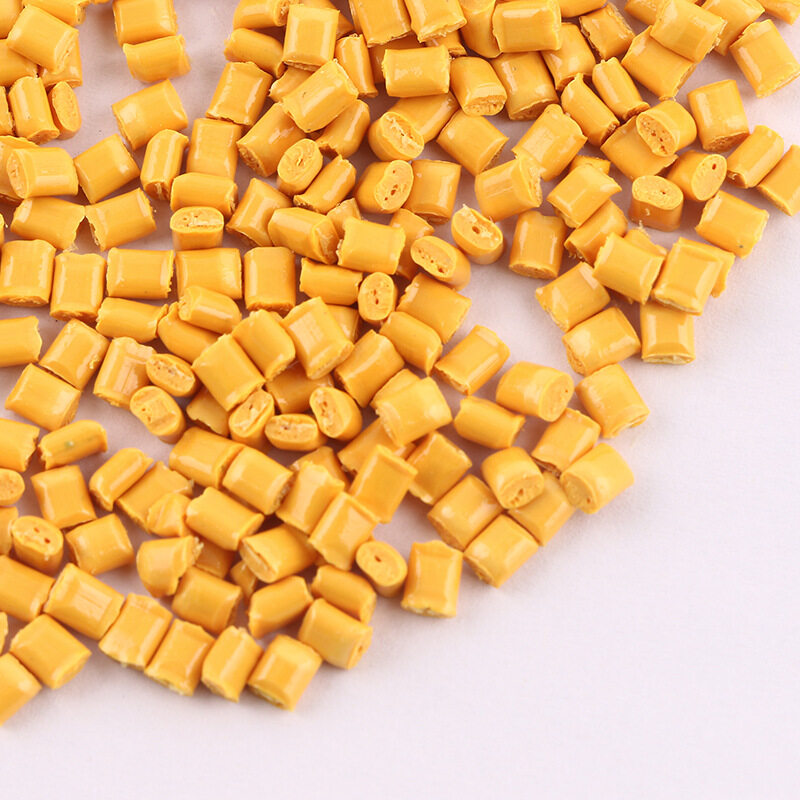Erreur de format d'e-mail
emailCannotEmpty
emailDoesExist
pwdLetterLimtTip
inconsistentPwd
pwdLetterLimtTip
inconsistentPwd

Offer Technical Support and Customized Solutions
The company is committed to creating new and improved plastic materials to meet the evolving demands of the market.

Introducing Reinforced Engineering Plastics: Enhancing Engineering Plastics!
Definition of Reinforced Engineering Plastics:
Reinforced plastics are novel materials in which reinforcing materials are added to polymers to improve their mechanical properties. Reinforced plastics, or FRTP (Fiber Reinforced Thermoplastics), are typically produced by compounding thermoplastic resins with reinforcing materials. FRTP enhances material stability, strength, toughness, heat resistance, environmental resistance, recyclability, and the predictability of these properties. Therefore, these enhanced plastics fall into the category of "engineering plastics."
The most commonly used polymers among various reinforced plastics include polypropylene, polyamide (nylon), polycarbonate, etc. The mainstream fillers are usually glass fibers and carbon fibers. Other commonly used base resins include PE, POM, polysulfone, polyphenyl ether, etc.
https://www.toponew.com/products/pa6-compound/PA6-E0715
https://www.toponew.com/products/pp-compound
Reinforced plastics incorporate various reinforcing materials, including glass fibers (GF), carbon fibers (CF), organic polymer fibers, inorganic fibers (such as boron fibers BF/whiskers/calcium silicate), natural fibers, metal fibers, ceramic fibers, non-fibrous fillers (such as glass beads, minerals like kaolin/talc/mica/silica/clay/barium sulfate/calcium sulfate/calcium carbonate, and elastomers), as well as additives (such as flame retardants, lubricants, coupling agents, foaming agents), and more.
Characteristics of Reinforced Engineering Plastics:
- High Specific Strength:
Reinforced plastics exhibit better specific strength than general metal materials, making them lightweight and high-strength engineering materials.
- Excellent Thermal Performance:
Unreinforced thermoplastics have lower heat deformation temperatures and can only be used between 50 to 100°C, while plastic alloys can operate above 100°C and even up to 150-200°C for long-term use. The addition of fiber materials significantly reduces the coefficient of linear thermal expansion and minimizes product shrinkage during molding. However, directional shrinkage during molding should be considered during product design, mold design, and manufacturing.
- Good Electrical Performance:
Plastic alloys reinforced with glass fibers possess excellent electrical insulation properties. They maintain good dielectric properties even under high-frequency conditions, are unaffected by electromagnetic effects, do not reflect electromagnetic waves, and have good microwave transmissivity.
- Excellent Chemical Resistance:
Except for hydrofluoric acid, glass fiber exhibits excellent chemical resistance. The chemical resistance of reinforced plastics depends on the base resin and reinforcing materials used.
- Good Aging Resistance:
Although some plastic alloys may experience aging and performance degradation under the influence of light and heat, the extent of degradation is lower compared to the base resin.
- Superior Processability:
Similar to general thermoplastics, reinforced plastics can be processed using injection molding and extrusion methods without requiring special molding equipment.
- Low Molding Shrinkage:
Reinforced plastics exhibit significantly reduced shrinkage, with shrinkage rates generally below 1%.
Noticeable Drawbacks of Reinforced Plastics:The addition of reinforcing materials increases material density, reduces surface smoothness of the finished products, may result in anisotropic mechanical properties, molding shrinkage, and thermal expansion coefficients. Transparency of products decreases, welding strength decreases, water marks become more noticeable, and hard glass fibers cause higher equipment wear. Despite these drawbacks, FRTP products are widely used in various engineering fields.
Characteristics of Injection Molding for Reinforced Plastics:
Due to the high content of fiber reinforcing materials in plastic alloys, the melt viscosity is high, resulting in poor flowability. To overcome the issue of insufficient mold filling during the injection molding process, common approaches include increasing the gate and runner diameter, raising injection pressure, and elevating barrel and mold temperatures.
These features make reinforced engineering plastics an exciting and versatile choice for demanding applications in many industries! Explore the possibilities with TOPONEW, your trusted supplier of reinforced plastic granules!

